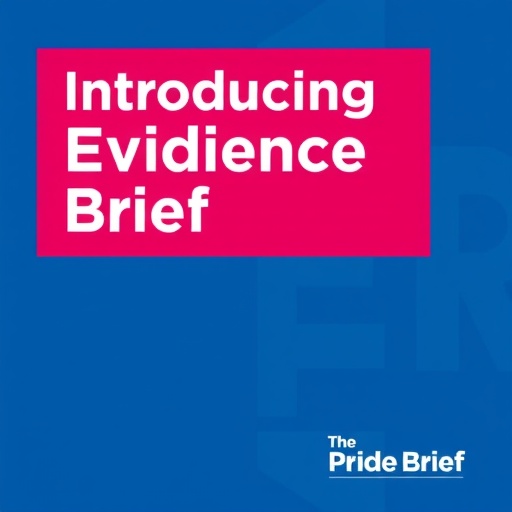In the rapidly evolving landscape of health care, the need for effective communication of research findings has never been more crucial. As health professionals strive to keep pace with an overwhelming array of scientific literature, a groundbreaking tool named “Evidence Brief” has emerged as a beacon of hope. This innovative framework is designed specifically for allied health professionals, aiming to translate complex research into digestible, actionable insights. The tool promises not only to enhance the quality of patient care but also to bridge the gap between academic research and real-world application.
The development of Evidence Brief is a response to the challenges faced by allied health practitioners in accessing and utilizing research findings. With countless studies published every day, practitioners often struggle to discern relevant information that could impact their practice. The creators of Evidence Brief recognized that an effective communication tool could serve as a game-changer in this context, allowing practitioners to focus more on their patients and less on deciphering dense academic texts.
The team behind Evidence Brief, spearheaded by researchers Pain, Kingston, and Perks, embarked on a comprehensive evaluation process to ensure that their tool meets the needs of its users. Through collaboration with a diverse group of allied health professionals, they gathered insights about the types of information that practitioners typically seek and the barriers they encounter when attempting to stay informed about the latest research. This user-centric approach was pivotal in shaping the functionalities of Evidence Brief.
One of the standout features of Evidence Brief is its structured format that presents research findings in a clear and concise manner. Each brief distills critical information into bite-sized pieces, highlighting key outcomes, methodologies, and implications for practice. By doing so, the tool empowers practitioners to make informed decisions more swiftly, ultimately enhancing patient outcomes. As the health care environment becomes increasingly complex, having access to well-organized and relevant information is essential for effective decision-making.
The evaluation of Evidence Brief also involved an assessment of its impact on practitioners’ confidence in utilizing research. Preliminary findings indicate that practitioners who engaged with the tool reported higher levels of confidence in their ability to integrate research findings into their daily practice. This is particularly important, as the perceived difficulty of applying research can often hinder the uptake of scientific advancements in clinical settings. By providing a user-friendly interface and straightforward summaries, Evidence Brief demystifies the research process.
In addition to bolstering practitioners’ confidence, Evidence Brief has been designed to facilitate collaborative care. The tool encourages discussion among allied health professionals, allowing them to share insights from the briefs in their team meetings. This communal approach fosters a culture of continuous learning and improvement, essential for delivering high-quality care in today’s multidisciplinary health care teams. The capacity to engage with colleagues on research findings cultivates a shared knowledge base that can enhance team efficiency and the quality of patient care delivered.
Moreover, Evidence Brief addresses a critical gap in the dissemination of allied health research by targeting both practitioners and educators. The tool’s formulation allows it to be utilized in educational settings, where it can serve as a resource for training future health professionals. In this way, the impact of Evidence Brief extends beyond individual practice, potentially shaping the next generation of health care providers who are adept at integrating research into their care delivery.
The complexities surrounding health care data can be daunting, but Evidence Brief seeks to simplify this through its strategic design. It employs visual aids and summaries that cater to various learning styles, making it easier for practitioners to engage with and retain information. The integration of visual learning components is particularly important, as studies show that visual content significantly enhances comprehension and memory retention. Thus, Evidence Brief not only informs but also educates, empowering practitioners with the knowledge they need to improve patient outcomes.
As health care continues to evolve, so too does the environment in which allied health professionals operate. The COVID-19 pandemic underscored the importance of rapid research translation in urgent situations. The versatility of Evidence Brief, with its emphasis on real-time information sharing, positions it as an essential tool in crisis situations where timely decisions can directly impact patient health outcomes.
Looking to the future, the creators of Evidence Brief are committed to continuously refining the tool based on user feedback. This iterative approach ensures that the tool remains relevant to practitioners’ needs in a fast-paced health care environment. As allied health professionals embrace Evidence Brief, the ongoing evaluation will provide critical insights into its effectiveness and areas for improvement.
The implementation of Evidence Brief could signify a paradigm shift in how allied health research is communicated and utilized. By transforming complex scientific information into straightforward, actionable briefs, the tool stands poised to enhance the landscape of health care delivery. As the research-to-practice gap narrows, practitioners will be better equipped to leverage evidence-based insights, ultimately leading to improved patient care, outcomes, and overall health system efficiency.
In an age inundated with information, innovative solutions like Evidence Brief highlight the necessity of effective communication in health care. By simplifying research translation, the tool not only benefits individual practitioners but also elevates the standards of care across disciplines. For allied health professionals looking to stay informed, engaged, and empowered in their practice, Evidence Brief represents the future of health communication.
Through its commitment to enhancing allied health research translation, Evidence Brief is helping to shape a more informed and responsive health care workforce. The firsthand accounts of practitioners who have utilized the tool illustrate its potential for fostering a culture of learning and collaboration. As the evidence continues to mount, it is clear that Evidence Brief could set a new standard for how research is communicated across the health care spectrum, forging an invaluable link between theory and practice.
In conclusion, the development of Evidence Brief not only promises to streamline the communication of crucial research findings but also aims to empower allied health professionals. By providing a user-friendly, research-focused tool, the creators are championing a new wave of informed practitioners capable of delivering superior patient care. The commitment to continuous improvement further indicates that Evidence Brief will adapt and evolve, ensuring it remains a vital resource in the ever-changing landscape of health care.
Subject of Research: Development and evaluation of a research translation communication tool for allied health professionals.
Article Title: Development and evaluation of a tool (named Evidence Brief) to communicate allied health research translation.
Article References:
Pain, T., Kingston, G., Perks, S. et al. Development and evaluation of a tool (named Evidence Brief) to communicate allied health research translation.
BMC Health Serv Res 25, 1385 (2025). https://doi.org/10.1186/s12913-025-13421-1
Image Credits: AI Generated
DOI: 10.1186/s12913-025-13421-1
Keywords: Research communication, Allied health, Evidence-based practice, Health care communication, Patient outcomes.
Tags: academic research applicationactionable research insightsallied health professionalsbridging research gapscommunication of research findingsevidence-based practicehealth care innovationhealth professional resourcesPatient Care Improvementpractitioner access to researchresearch translation toolssimplifying complex research





